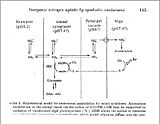- Location
- Washington Heights, NY
I email the professor from that class about a nitrate model. Hopefully she will get back to me.
But Randy found something that could be useful, I also invited him to join the discussion if want.
Can anyone get this article?
But Randy found something that could be useful, I also invited him to join the discussion if want.
<a href=showthread.php?s=&postid=6739459#post6739459 target=_blank>Originally posted</a> by Randy Holmes-Farley
This article may cover it (or not, I do not have it):
The symbiotic anthozoan: a physiological chimera between alga and animal. Furla, Paola; Allemand, Denis; Shick, J. Malcolm; Ferrier-Pages, Christine; Richier, Sophie; Plantivaux, Amandine; Merle, Pierre-Laurent; Tambutte, Sylvie. UMR 1112 INRA-UNSA, University of Nice-Sophia Antipolis, Nice, Fr. Integrative and Comparative Biology (2005), 45(4), 595-604. Publisher: Society for Integrative and Comparative Biology.
Abstract
A review. The symbiotic life style involves mutual ecol., physiol., structural, and mol. adaptations between the partners. In the symbiotic assocn. between anthozoans and photosynthetic dinoflagellates (Symbiodinium spp., also called zooxanthellae), the presence of the endosymbiont in the animal cells has constrained the host in several ways. It adopts behaviors that optimize photosynthesis of the zooxanthellae. The animal partner has had to evolve the ability to absorb and conc. dissolved inorg. carbon from seawater to supply the symbiont's photosynthesis. Exposing itself to sunlight to illuminate its symbionts sufficiently also subjects the host to damaging solar UV radiation. Protection against this is provided by biochem. sunscreens, including mycosporine-like amino acids, themselves produced by the symbiont and translocated to the host. Moreover, to protect itself against oxygen produced during algal photosynthesis, the cnidarian host has developed certain antioxidant defenses that are unique among animals. Finally, living in nutrient-poor waters, the animal partner has developed several mechanisms for nitrogen assimilation and conservation such as the ability to absorb inorg. nitrogen, highly unusual for a metazoan. These facts suggest a parallel evolution of symbiotic cnidarians and plants, in which the animal host has adopted characteristics usually assocd. with phototrophic organisms.
Can anyone get this article?






